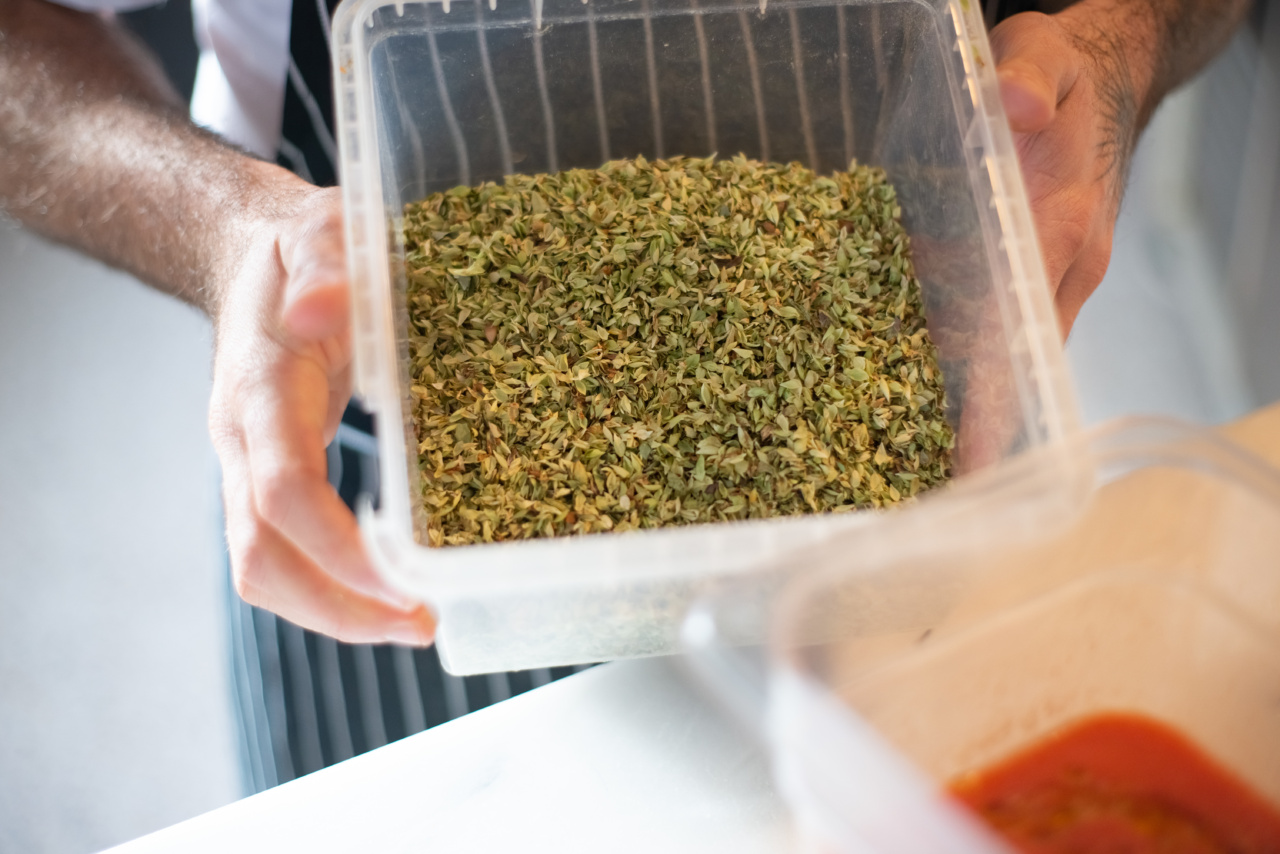Herbs play an integral role in the culinary world, providing a burst of fresh flavors and captivating aromas that elevate dishes to new heights.
They have been used for centuries to enhance the taste, color, and presentation of various cuisines across the globe. Chefs, both professional and amateur, understand the importance of incorporating herbs into their creations for their remarkable qualities.
1. Basil
Basil is a versatile herb that holds a special place in every chef’s heart. Its distinctive sweet and slightly peppery flavor adds depth to Italian dishes like pasta sauces, pesto, and Caprese salads.
It pairs exceptionally well with tomatoes and can even be used to infuse oils and vinegars. Additionally, basil boasts numerous health benefits, including anti-inflammatory and antioxidant properties.
2. Rosemary
Rosemary is an herb known for its intense earthy aroma and pine-like flavor. It is often used in marinades, roasted meats, and stews.
This highly fragrant herb brings a unique Mediterranean touch to dishes and can be infused into oils for a delightful twist. Rosemary is also believed to improve digestion and boost memory and concentration.
3. Thyme
Thyme is a small but mighty herb that packs a punch in terms of flavor. Its warm, earthy taste complements a wide variety of dishes, from soups and stews to roasted vegetables and poultry.
Thyme is also known for its medicinal properties, including its ability to soothe coughs and sore throats. It blends well with other herbs and spices, making it a staple in any chef’s spice rack.
4. Cilantro
Cilantro, also known as coriander, is an herb widely used in Asian, Middle Eastern, and Latin American cuisine. Its delicate leaves and stems contribute a fresh, citrusy flavor to dishes like salsas, curries, and guacamole.
While some people taste a refreshing burst of flavor, others find cilantro polarizing, with a distinct soapy taste. Nonetheless, it remains an essential herb in many culinary traditions.
5. Parsley
Parsley is more than just a decorative garnish on the side of a plate. This herb has a bright, grassy flavor that enhances the taste of various dishes, including soups, salads, and pasta.
Parsley is rich in vitamin C, vitamin K, and antioxidants, making it not only a delicious addition but also a nutritious one. Its versatility makes it a go-to herb for chefs looking to add a pop of freshness to their creations.
6. Sage
Sage is an herb with a distinctive dusty green color and a mildly peppery flavor. It is commonly used in Mediterranean and European cuisines, often paired with poultry, pork, or pasta.
The warm aroma and flavor of sage add depth to dishes, particularly when used in butter-based sauces or as a stuffing. In addition to its culinary merits, sage has been used in traditional medicine for its anti-inflammatory properties.
7. Dill
Dill is a feathery herb that offers a refreshing, tangy taste reminiscent of anise and celery. It is most commonly associated with pickles and seafood dishes, but its subtly sweet flavor can also enhance salads, sauces, and even bread.
Dill is rich in antioxidants and has been used in folk medicine for its potential antimicrobial and digestive benefits. Its versatility and unique taste make it a valuable addition to any chef’s herb collection.
8. Oregano
Oregano is an herb that truly shines in Mediterranean and Italian cooking. Its robust, slightly bitter flavor makes it a key ingredient in tomato-based sauces, pizza, and grilled meats.
Oregano has antioxidant and antimicrobial properties, making it a beneficial addition to the diet. Whether used dried or fresh, oregano brings warmth and depth to dishes and is a staple herb for any chef.
9. Mint
Mint is a refreshing herb known for its cooling and invigorating properties. Its bright, crisp flavor adds a delightful twist to both sweet and savory dishes, including salads, cocktails, and desserts.
Mint also has some potential health benefits, such as soothing indigestion and improving respiratory health. Its versatility and ability to brighten up any dish make it an herb highly appreciated by chefs around the world.
10. Chives
Chives are slender, delicate herbs featuring a mild onion-like taste. They are often used as a finishing touch, adding a gentle hint of flavor and a pop of vibrant green to various dishes, including soups, salads, and mashed potatoes.
Chives are a rich source of vitamins A and C and contain antioxidants that contribute to overall health. Their versatility and subtle flavor make them a favorite herb among culinary enthusiasts.
Conclusion
Chefs understand the invaluable role that herbs play in amplifying the flavors and aromas of their culinary creations.
From the vibrant and refreshing notes of mint to the earthy profiles of rosemary and thyme, each herb brings a unique and noteworthy quality to the table. Whether enhancing sauces, marinades, or simple salads, these ten herbs mentioned above are sure to impress any chef with their remarkable characteristics.































